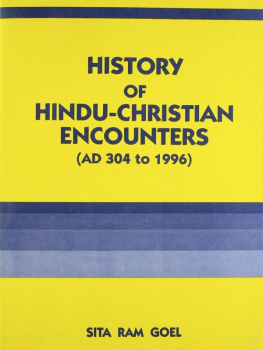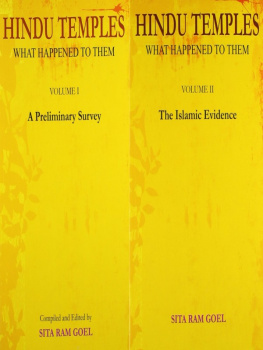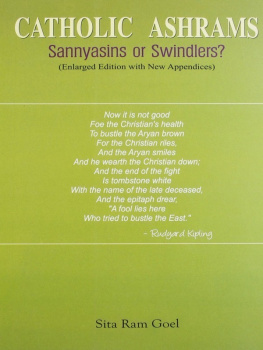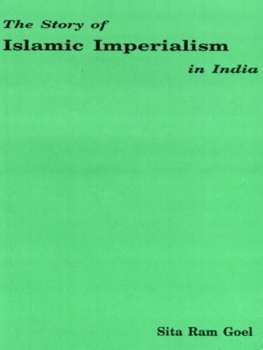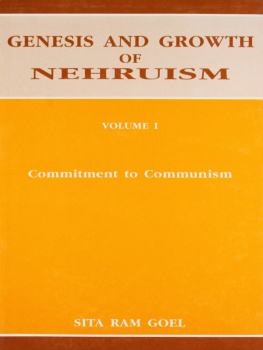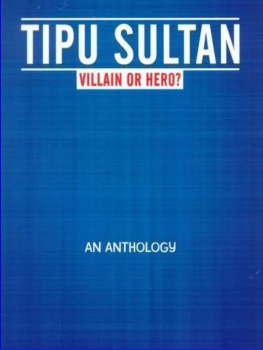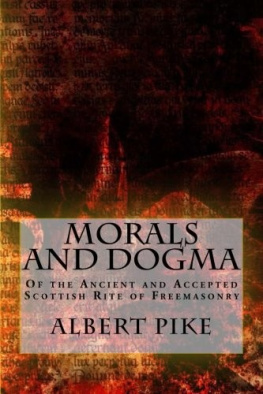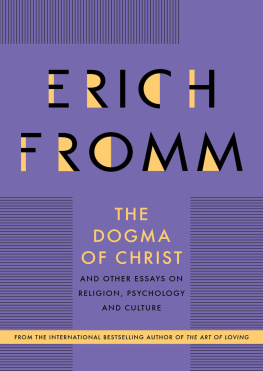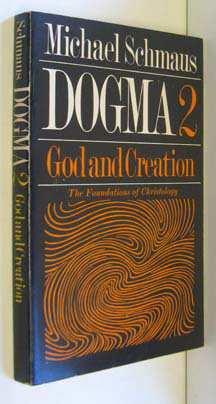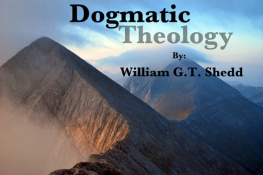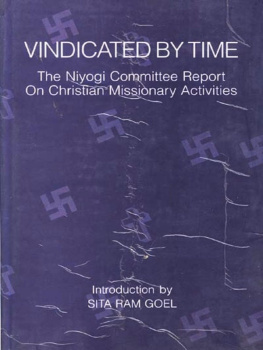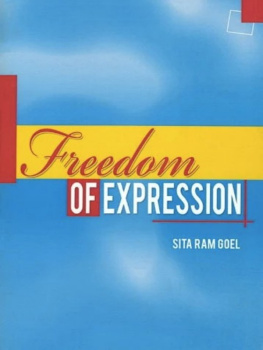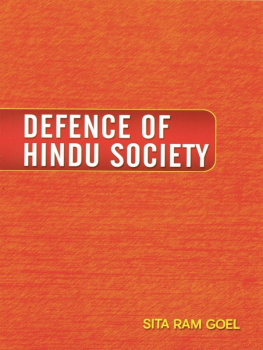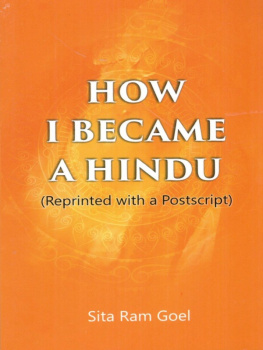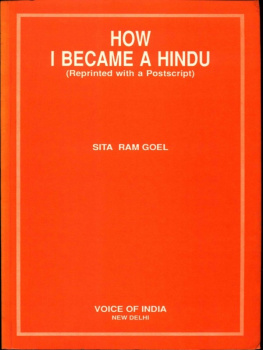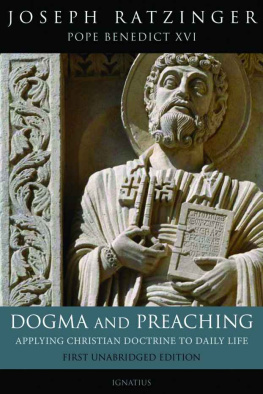Preface tothe Second Edition
The first editionof this book, published in 1986, had 16 chapters and an appendix. Thissecond edition has 25 chapters. The appendix - Encounter at Pondicherry- has been fitted in the chronology of encounters and forms Chapter 7 ofthe new edition. Chapter 14 of the old edition has been split into twochapters, 15 and 16, separating the debate on the Fundamental Right toPropagate Religion from the debate in the Constituent Assembly. Similarly,Chapter 16 of the old edition has been split into three chapters - 18,19 and 20 - separating the three subjects dealt with. Chapter 19 whichformed Section II of Chapter 16 in the old edition has been expanded byincorporation of a dialogue between Ram Swarup and Bede Griffiths. Fivechapters, 21 to 25, are entirely new and cover Hindu-Christian encountersthat have come to my knowledge since the first edition was compiled.
The old schemeof numbering and naming the encounters serially has been given up in thenew edition. I realized that there might have been Hindu-Christian encounterswhich had not come to my notice. The chapters have now been given headingsin keeping with their contents. But the chronological order has been maintained.
The new editionhas been thoroughly revised. Language has been straightened wherever necessary,and typographical errors have been removed. Footnotes have been numberedserially for each chapter, and not for each page as in the earlier edition.Some footnotes of the old edition have been expanded, and some new oneshave been added. Comments at the end of Chapter 3 have been revised. Acritical note regarding the role of the Ramakrishna Mission has been addedto Chapter 13 which deals with Swami Vivekanandas encounter with Christianity.Chapter 14 which deals with Mahatma Gandhis encounter with Christianitycarries a long and critical postscript. Criticism of Mahatma Gandhi maysound startling. But I could not help saying what I have said. His rolevis-a-vis Christianity has to be reassessed.
Finally, the booknow carries a subtitle - AD 304 to 1996. This was suggested by Shri HarishChandra, a keen reader and evaluator of VOICE OF INDIA publications.
It is hoped thatreaders will find this revised and enlarged edition as informative as theold one. The comments I received on the first edition were rewarding aswell as encouraging. Koenraad Elst came to me in 1989 as soon as he readthe book. His cryptic comment was, Hindus have a very good case vis-a-visChristianity and Islam, but at present it is either not presented at allor presented very badly. This book is a departure. It was not long beforehe became a scholar-writer of the VOICE OF INDIA family. I look forwardto comments from new readers of this work as a whole, and from the oldreaders on my critical notes and the new chapters, particularly the onewhich advocates rejection of Jesus as junk.
II
History of Hindu-Christianencounters, as surveyed in this book, falls into five distinct phases.In all of them Christian missionaries stick to their basic dogma of OneTrue God and the Only Saviour. But they keep on changing their methodsand verbiage. To start with, spokesmen for Hinduism offer a stiff resistanceto the Christian message as well as missionary methods. But due to a numberof factors, Hindu resistance weakens in later stages and then disappearsaltogether so that Christianity forges ahead with a sense of triumph.
In the first-phase,which opens with the coming of the Portuguese pirates, Christianity presentsitself in its true colours. Its language is as crude as in its homelandin Europe, and its methods as cruel. Hindus are helpless and suffer anynumber of atrocities. Fortunately for them, this phase does not last forlong. The Portuguese lose power except in Goa and some other small territories.The other European powers that take over have no time to spare for Christianityexcept the French for a brief period in Pondicherry.
The second phaseopens with the consolidation of the British conquest. The British do notallow Christian missions to use physical methods. But missionary languagecontinues to be as crude as ever. Christianity enjoys a brief period ofself-confidence. The phase ends with the rise of Hindu reform movements,particularly the Arya Samaj. Christianity suffers a serious set-back.
The third phasestarts with the advent of Mahatma Gandhi and his slogan of sarva-dharma-samabhAva.Christianity is thrown on the defensive and forced to change its language.The foul-mouthed miscreants become sweet-tongued vipers. Now they are outto share their spiritual riches with Hindus, reminding us of the nakedbeggar promising to donate his wardrobe to wealthy persons. The phase endedwith the Tambram Conference of the International Missionary Council in1938 which decided to reformulate Christian theology in the Indian context.
The fourth phasewhich commenced with the coming of independence proved a boon for Christianity.The Christian right to convert Hindus was incorporated in the Constitution.Prime Minister Jawaharlal Nehru who dominated the scene for 17 long yearspromoted every anti-Hindu ideology and movement. The regimes that followedtill the rise of P.V. Narasimha Rao raised the spectre of Hindu communalismas the most frightening phenomenon. Christian missionaries could now denounceas a Hindu communalist and fascist, even as a Hindu Nazi, any one who raisedthe slightest objection to their methods. All sorts of secularists cameforward to join the chorus. New theologies of Fulfilment, Indigenisation,Liberation, and Dialogue were evolved and put into action. The missionaryapparatus multiplied fast and manifold. Christianity had never had it sogood in the whole of its history in India. It now stood recognized as anancient Indian religion with every right to extend its fold. The onlyrift in the lute was K. M. Panikkars book, the Niyogi Committee Report,and Om Prakash Tyagis Bill on Freedom of Religion.
The fifth phasewhich is continuing now started with Hindu awakening brought about by conversionof some Harijans to Islam at Meenakshipuram, renewed Muslim aggressionin many ways, and Pakistan-backed terrorism in Punjab and Kashmir. TheSangh Parivar which had turned cold towards Hindu causes over the yearswas startled by the rout of the Bharatiya Janata Party in the 1984 elections,and decided to renew its Hindu character. The Ramajanmabhumi Movement wasthe result. The Movement was aimed at arresting Islamic aggression. Christianityor its missions were hardly mentioned. Nevertheless, it was Christianitywhich showed the greatest concern at this new Hindu stir, and started cryingwolf. Its media power in the West raised a storm saying that Hindus wereout to destroy the minorities in India and impose a Nazi regime. The stormis still raging and no one knows when it will subside, if at all.
II
Hindus from seventeenthcentury Pandits of Tamil Nadu to Mahatma Gandhi have wasted no end of breathto demolish the dogma of Christianity. But it has hardly made any differenceto the arrogance of Christian theologians and missionaries. That is becausedogma was never meant for discussion. It is an axiom of logic that thatwhich has not been proved cannot and need not be disproved. Who has everproved that the nondescript Jew who was crucified by a Roman governor ofJudaea in 33 AD atoned for the sins of mankind for all time to come? Whohas ever proved that those who accept that Jew as the only saviour willascend to a heaven of everlasting bliss and those who do not will burnfor ever in the blazing fire of hell? Nor can the proclamation or the promiseor the threat be disproved. High-sounding theological blah blah notwithstandingthe fact remains that the dogma is no more than a subterfuge for forgingand wielding an organizational weapon for aggression against other people.It is high time for Hindus to dismiss the dogma of Christianity with thecontempt it deserves, and pay attention to the Christian missionary apparatusplanted in their midst.

